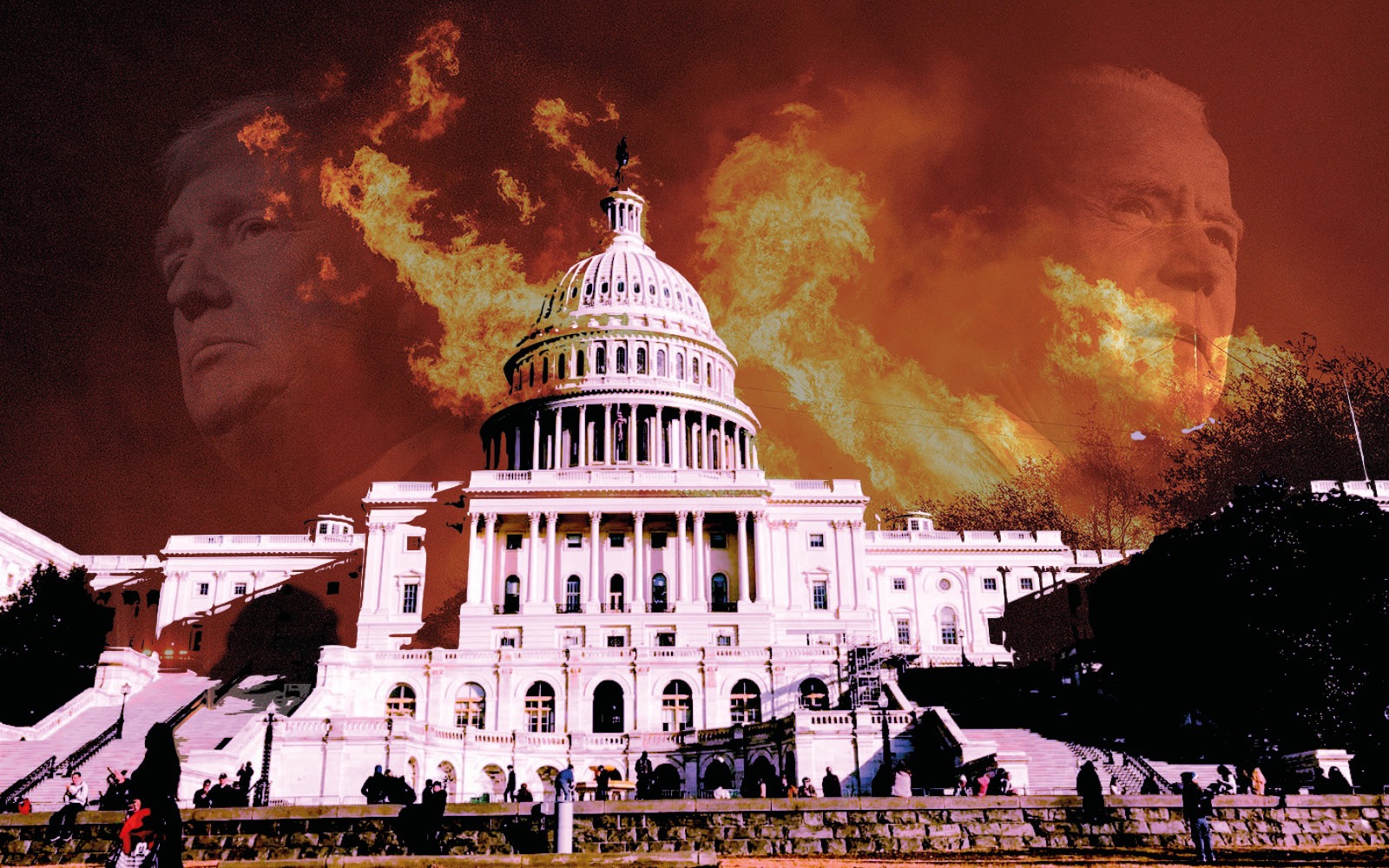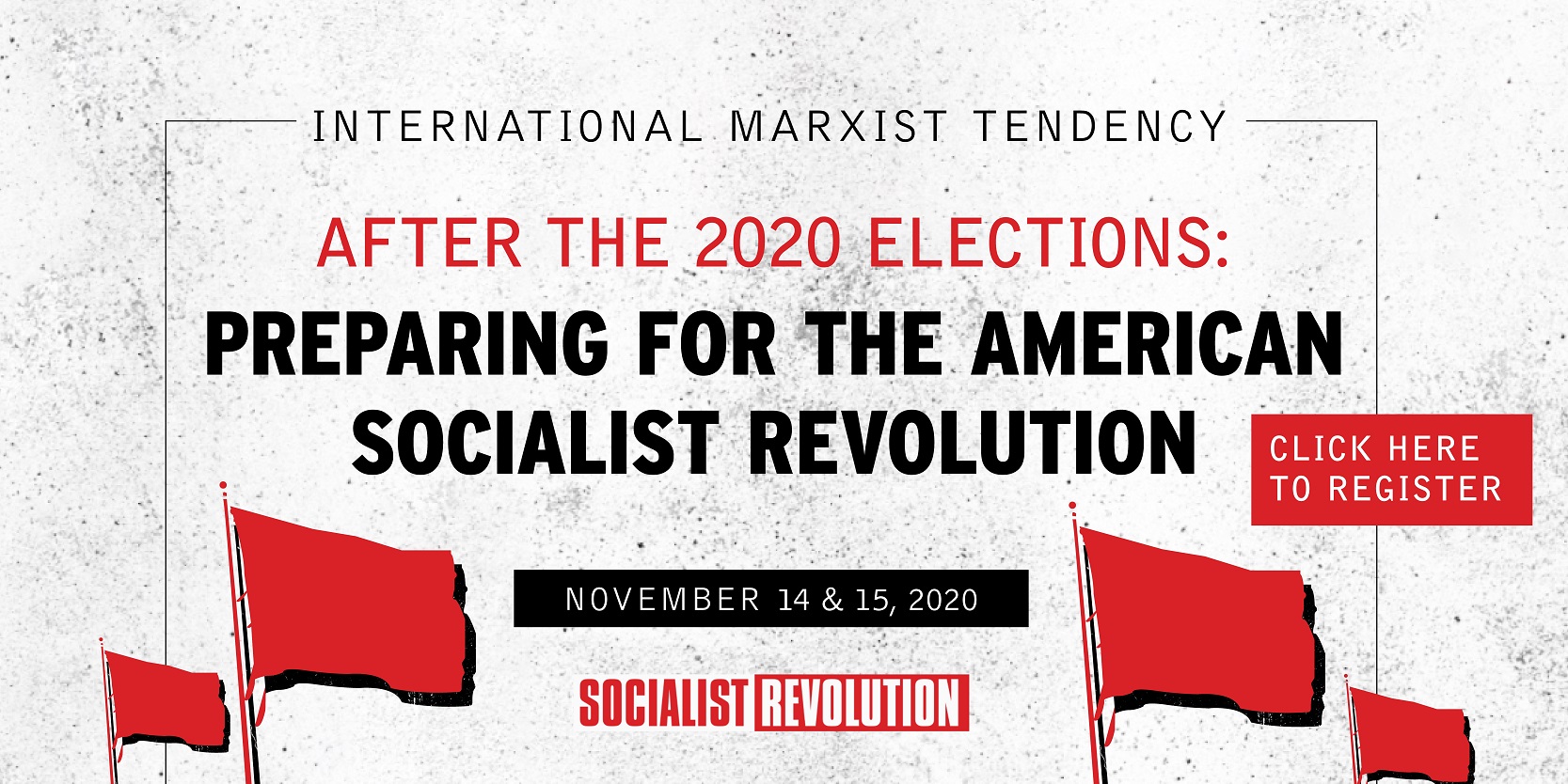This year's US presidential elections are a repulsive demonstration of the utter bankruptcy of American bourgeois democracy, at a time of unprecedented crisis and polarisation. No matter who wins, American workers and youth lose. Given the nightmare US capitalism has foisted on the country and the entire world, what is needed above all is a mass socialist party that will fight for the interests of working people.
“I’m worried about our economy, I’m worried about… What if Trump wins again? What if Biden gets in? I mean, it’s going to be one or the other and it scares the hell out of me because I don’t really want either one of them.” – A working-class grandmother and former Trump voter from the north woods of Wisconsin, interviewed on The Daily podcast.
On the eve of the 2016 election, we wrote the following: “If Brexit can happen, Donald Trump can become the next President of the United States.” Against all odds and to the dismay of billions around the world, this is precisely what occurred. In the aftermath, we explained the fundamental reasons for his upset victory. Above all, we emphasized that the only way to defeat Trump and the system he represents is to fight on a class-independent basis against capitalism.
Following on from the 2008 economic meltdown, the 2016 election marked a turning point in the evolution of the US political landscape. Not only did it usher in the most polarized and turbulent period in living memory, but it also marked a new stage in the crisis of the regime of the American ruling class. Like Brexit, Trump’s victory was not “supposed to happen.” None of the major political strategists expected it, and he was clearly not the candidate Wall Street wanted. But for millions of tired and angry voters who had just lived through eight years of stagnation under the Democrats, the prospect of yet another “status-quo” Clinton administration failed to inspire. The “deplorables” gave Washington and the liberals a giant middle finger.
The 2016 election was characterized by the crisis of liberalism and a two-party system that failed to reflect the real mood of discontent in society. Above all, it marked the dramatic entry of socialism into the mainstream dialogue and the minds of tens of millions of American workers and youth.
Four years have now passed, and despite an unprecedented degree of accumulated class anger, the working class still doesn’t have a party of its own. In a tragi-farcical rehash of 2016, Bernie Sanders capitulated yet again to the establishment. The ruling class breathed a collective sigh of relief when he dropped out of the race. Nonetheless, the specter of socialism continued to linger over the election. Nearly half of Americans, including 70% of the youth, say they would vote for a socialist candidate. There has been more talk about the rise of socialism—and more red-baiting by a US president—than at any time since the collapse of the Soviet Union. As a result, Trump is facing off against yet another Democratic candidate of Wall Street. It is by no means ruled out that he could beat the odds once again and win another term. But this doesn’t mean that nothing has changed since the last go-around.
We live in a significantly changed world. The systemic crisis of capitalism is all-encompassing and is steadily eroding confidence in all of its institutions. The experience of the worst economic crisis in history, the criminally mishandled pandemic, and the largest and broadest protest movement in US history have left an indelible mark on the consciousness of millions—and it is only the beginning.
Let’s not forget that Bernie had the enthusiastic support of millions and seemed poised to win the Democratic nomination—until the party coalesced around Biden. In early March, it was the momentum of the Sanders campaign—more than the economy, the Trump administration, or even the growing pandemic—that filled the ruling class with dread. Had Sanders run as an independent from the beginning, or run as one after again being undermined and derailed, the electoral landscape would be fundamentally different. Just imagine what a bold and energized, working-class campaign for universal employment, healthcare, and education would look like. A campaign that mobilized millions behind a comprehensive plan to rebuild our infrastructure and combat the climate crisis while defending workers’ wages and jobs. A campaign that put socialism and the fight against racism and police brutality front and center.
14-15 Nov: online school about revolution in the USA!
Click the image below to find out more, and register today!
Crisis layered upon crisis
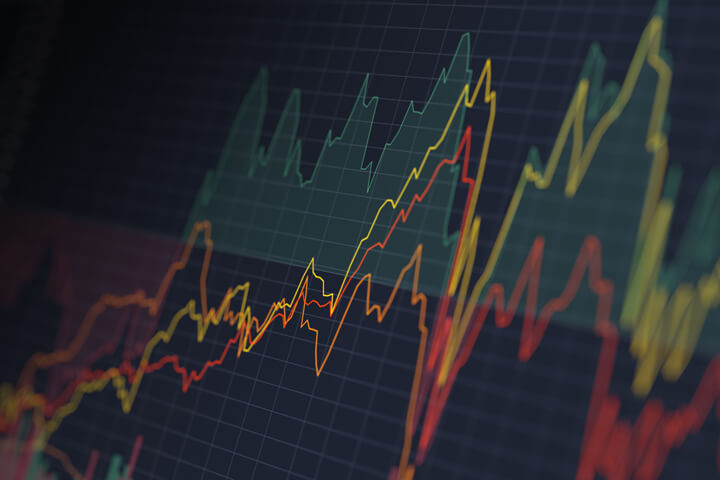 COVID-19 cases soar even as the economy plummets / Image: public domain
COVID-19 cases soar even as the economy plummets / Image: public domain
Although Trump has pushed to reopen the economy at any cost, the bounce back has been reflected, above all, on the stock market and not on the job market. To be sure, the highest GDP growth in history was recorded in the third quarter, but that was only because it had fallen so precipitously in the earlier half of the year.
In reality, the economy is still 3.5% smaller than it was a year ago. Millions remain unemployed, millions have been thrown into desperate poverty, and an estimated 9.9 million households are behind on mortgage or rent payments and in danger of being evicted from their homes.
The national debt is projected to surpass GDP for the first time since World War II. This means that every worker in the US would have to produce for an entire year without consuming anything—no food, no fuel, no fun, no nothing—and it still wouldn’t be enough to cover everything the country owes. Never mind the trillions owed on credit cards, mortgages, student and auto loans, and more.
The pandemic has soared to new heights in the days before the election, with 50,000 people hospitalized, nearly nine million infections, and 230,000 deaths recorded in the US so far.
And to top it all off, there is profound uncertainty over how the White House and a hyper-polarized society will respond to the results—or whether those results will be clear in anything approximating a timely fashion. This is the general situation as the world watches the dumpster fire of American bourgeois democracy.
Political rollercoaster
In 2016, after two terms of Obama, the intensely despised Donald Trump and Hillary Clinton vied for the presidency. We all know the result—a razor-thin victory for the reality-TV star. Four years later, we have a de facto referendum on the sitting president.
Trump promised to repeal and replace Obamacare with something better; to spend trillions on infrastructure; to revive manufacturing and coal mining; and, of course, to force China to “play fair” and make Mexico pay for a border wall. He also promised to make “America First”—but he has succeeded only in making the US number one in infections and deaths from COVID. The longest economic boom in US history came crashing down on his watch, and his response to the pandemic has been an Orwellian dystopia.
And yet, he continues to present himself as a maverick, skillfully tapping into the widespread anti-establishment mood. Though he is currently the king of the swamp, he can reasonably argue that he is the real “outsider” in the campaign. He is, after all, America’s savior, the man who made the country “Great Again”—and the only one who can keep it that way.
And although many who voted for him have at long last abandoned him due to his handling of the pandemic and the economy, he still has a strong base in many parts of the country. Many take him at his word that China is to blame for the virus, that scientists ruined the economy, and that hordes of rampaging socialists will impose a Stalinist tyranny if Joe Biden is elected. Win or lose, the deep-seated anger against the liberal establishment, egged on by far-right media, isn’t going anywhere anytime soon, and Trump will continue to capitalize on it.
Trump has so far declined to commit to a peaceful transfer of power should he lose the election. This led the Pentagon to weigh in, making it clear that the military would not intervene to decide the election one way or another. The Department of Homeland Security and other agencies have made special preparations in the case of civil unrest. Businesses in major cities are boarding up their windows in preparation for a potential hurricane of social uprisings, and a “non-scalable” wall is to be erected around the White House. This is an extraordinary state of affairs.
Polarization
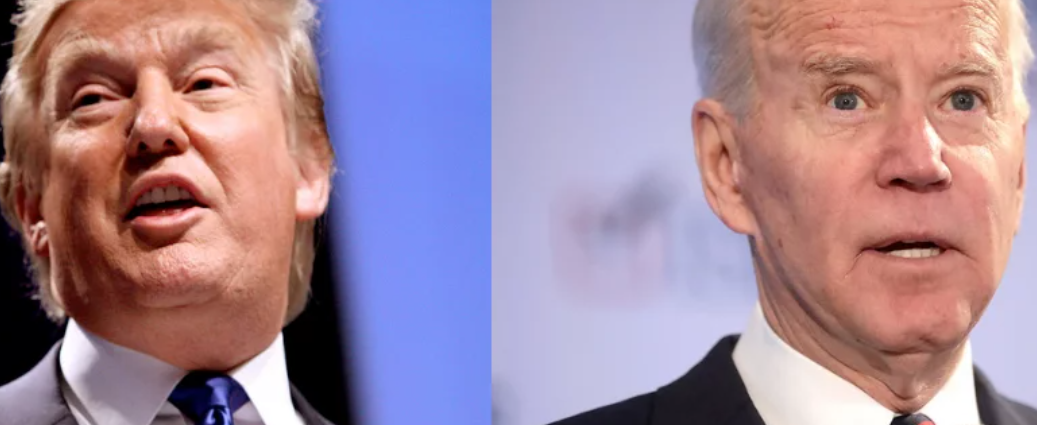
American society is as polarized as it has ever been in living memory. The social movements of the 1950s, ‘60s, and early ‘70s took place in the context of a general rise in living standards. Now the majority have been mired in stagnation for decades while the billionaires rake in astronomical wealth.
Many commentators speak of the “two Americas.” We are told that a kind of “rural versus urban” sectionalism has irreconcilably split the country. To be sure, the US is a vast and varied country, with tremendous regional variation and a wide range of overlapping and often antithetical “American” cultures and subcultures. But at root, what is taking place is a prolonged and distorted process of class polarization and differentiation. Given the weakness of the left, the lack of a mass working-class political party, and the capitulation of the labor leaders to big business, this is expressed in a warped and contradictory way and refracted through existing major parties.
Ironically, the founders of this country sought to avoid partisanship and the party system altogether. But political parties represent classes or layers of classes in society, and in the final analysis, the economic and social interests of those classes and layers. As long as classes exist, partisan politics and parties, in one form or another, cannot be outlawed by decree and will find an outlet for expression.
The US is unique among advanced industrialized countries in that we have never had a mass working-class political party of any significant size or duration. Building such a party is the main political task for our class in the next historical period. This is a towering challenge, but such a party can emerge far more quickly than anyone imagines under certain conditions.
There is enormous potential and a yawning vacuum for class-independent politics. The so-called political center has been hollowed out by the capitalist crisis, which explains the rising interest in socialism and communism and the rise of a more vocal and visible extreme right. It speaks volumes that Science magazine found that Americans now hate people in the opposite political party more than they love “their own” party.
However, this polarization is not merely expressed ideologically and in the polls. In time-honored American fashion, growing numbers of people are searching for a way out with arms in hand.
Far-right militias stockpiling arms to combat the tyranny of an unchecked government have infested this country for decades. Spikes in gun sales are also common before elections, as the guns and ammunition lobby provoke panic buying by screaming that the Democrats are coming to take away people’s guns. But the shift we’re seeing now reflects something far more profound.
First-time gun purchases have surged since the beginning of the pandemic. In fact, since the late 1990s, eight of the 10 weeks with the highest recorded gun sales were since March of this year. For various reasons, growing numbers of ordinary Americans—on both the left and the right—don’t trust the state to keep them safe and believe that the only way to defend yourself is to do just that.
This mood of anxiety and insecurity is a function of the general instability brought about by the never-ending crisis. Those who lean to the right believe the sensationalist media coverage of events in places like Portland and Seattle and worry that rioting left-wing mobs will swarm the suburbs, ransack their homes, and carry off their children. Many who lean to the left fear that if Trump loses outright or if it’s a contested election, there will be chaos and violence from groups like the Proud Boys and Boogaloo Boys. And if Trump wins, they worry that the entire state apparatus will be utilized against them.
The rise of what are effectively armed black militias like the Not Fucking Around Coalition is highly significant. Let’s not forget that black people defended themselves with guns against white supremacists in the Reconstruction era and the Jim Crow South in places like Tulsa in 1921. The rise of armed neighborhood patrols in cities like Minneapolis during the George Floyd protests this summer is likewise an embryonic expression of the need for organized working-class self-defense.
And even if there isn’t widespread violence around these particular elections, the stakes will have been upped for the inevitable clashes between classes in the future. The vast majority of Americans used to believe that another civil war “can’t happen here.” But increasingly, millions of people believe that this is not only possible but imminent, that it is not a question of if but, rather, when things will start to pop off.
This is precisely the kind of tension that accumulated, with starts and stops, in the lead-up to the two revolutionary civil wars this country has already experienced.
A fraud and a farce
Trump has incessantly beat the drum of voter fraud. Although there is no evidence that this kind of fraud is widespread, there have certainly been irregularities. Piles of ballots have allegedly been found dumped or burned. Unofficial ballot collection boxes appeared in California. And in the vast spaces of Texas, the governor allowed just one official ballot collection station per county—although some counties have 40,000 people and others have 2 million.
The president’s refusal to preemptively accept the possibility of defeat may be a way of establishing cover for a loss, which would be devastating to his ego and image. Behind the scenes, a team of 150 people, including Trump’s chief of staff, has been working for months on a possible transition to a Biden administration. Although he has an undue influence, the fate of the American capitalist Republic doesn’t rest solely in the hands of a single individual.
By painting the results as fraudulent, Trump may actually be in an even stronger position out of power than in it. He would be even less hemmed in by the need for decorum and concern for institutional integrity than he is as president. If Biden wins, he will inherit multiple crises and have limited tools to confront them, not to mention a virulent far-right opposition. If Trump can muddy the transfer of power and paint himself as a victim of liberal tyranny, his base will be fired up, and he will live to fight another day—potentially running for another term in 2024.
But we can agree with the president on this: these elections are a fraud and farce. For all the talk of Trump carrying out a “coup” against the US Constitution, we must be clear that this document has always been a tool for ensuring the rule of a minority over the majority.
For decades after the Constitution was first adopted, only white, property-owning males could vote. Slaves, women, Native Americans, and the poor had no voice whatsoever. Eventually, after many waves of bitter class struggle, the franchise was extended. US women didn’t get the right to vote until 1920—three years after the Russian Revolution granted this right. But countless other measures were and are used to limit political participation or to engineer the results in advance—from literacy requirements to poll taxes and the contortionist gerrymandering of districts.
Voter intimidation and electoral violence are as old as the Constitution—and as American as apple pie. So, too, is institutional disenfranchisement. 36 states currently have identification requirements for voters. Seven states have strict photo ID laws—with no exceptions. At the same time, over 21 million US citizens do not have government-issued photo identification. These IDs can be expensive, and even when they are free, applicants must cover related documentation and travel expenses themselves.
Then there are the millions of documented and undocumented immigrants who live, work, and pay taxes in the US and who have to abide by American law, yet have no voice in what happens to them or the places they live. Added to that are the 3.4 million Puerto Ricans who can’t vote despite being a “US territory”—in reality, a de facto colony—ultimately governed by Congress and the president. The same goes for the citizens of the US Virgin Islands, Guam, etc.
And what about the 5.2 million convicted felons who cannot vote even if they’ve served their terms? Due to American capitalism’s structural racism, this layer of the population is disproportionately poor, black and Latino. Over 6.2 percent of the adult black population is denied the vote compared to 1.7 percent of the non-black population. Nearly 900,000 Floridians who have completed their sentences remain unable to vote in this so-called swing state, despite a 2018 ballot referendum that promised to restore their voting rights.
Added to this, armies of Democratic and Republican lawyers are currently flooding the courts with motions to invalidate tens of thousands of votes for this or that spurious reason. When just a few hundred votes regularly decide elections, these kinds of margins can make a real difference.
Then there’s the Electoral College. The fact is, there is no constitutional right for citizens of the “world’s greatest democracy” to elect the highest office in the land. What is elected on election day is the so-called Electoral College. Votes to this body are allocated based on how many Senators and Representatives each state has. But since every state automatically gets two Senators and a minimum of one Congressperson, this skews the balance towards smaller, rural, conservative states. Even though they appear small, these margins can again be decisive.
As an example, both North Dakota and California have two Senators and the corresponding electoral votes—even though California’s population is 50 times higher. In all states except Maine and Nebraska, the winner takes all the electoral votes. Trump won the massive state of Florida by just 100,000 votes in 2016—and took all 29 electoral votes. In 2000, GW Bush won all of Florida’s electoral votes and the presidency with a lead of just 525 popular votes. And although he received three million fewer popular votes than Hillary Clinton that year, just 77,000 votes across three states in the upper Midwest handed Trump the Electoral College and the keys to the White House.
As a result, the so-called battleground or swing states take far greater precedence when it comes to campaigning—since all that matters are the 270 electoral votes required for victory. Many states are all-but-guaranteed to vote for one party or another, so the 80% of the population living in non-battleground states are often simply taken for granted. This bit Hillary Clinton in the face in 2016, as she didn’t visit the state of Wisconsin even once, so confident was she that those votes were in the bag. So it doesn’t matter if you vote for Trump in New York or Biden in Mississippi—your vote has zero effect on the outcome. Little wonder that a majority of Americans support abolishing this archaic institution outright.
Some states have signed on to the National Popular Vote Interstate Compact (NPVIC) to address this. This is an agreement among a group of US states and the District of Columbia to award all their electoral votes to whichever presidential candidate wins the overall popular vote. But the number of electoral votes would still be skewed towards the smaller, more rural, and conservative states.
In all their wisdom, the Constitution’s framers decided on an even number of electors, thus opening the possibility of a tie in the Electoral College. If this were to occur, the House of Representatives would elect the president on the basis of one vote per state delegation. This makes an even greater mockery of the concept of democracy, as California would receive one vote for its delegation of 53 Representatives, while South Dakota would also receive one vote for its single Representative. As things currently stand in 2020, this would favor Donald Trump.
Then there’s the Supreme Court, which could well be called upon to weigh in on the elections and potentially tip the balance, as it did in the 2000 fiasco between Al Gore and GW Bush. For years, Chief Justice John Roberts has tried to play a balancing act, using the court’s power to exert political influence without appearing to do so. This charade will be harder to pull off now that the court has been loaded with conservative “interpreters” of the Constitution—appointed for life. It is worth noting that justices Roberts, Kavanaugh, and Coney Barrett were all involved with Bush’s campaign in the 2000 election.
The fact that there are so-called liberal and conservative justices exposes this unelected body’s deeply political nature. Although they would have us believe that the highest court in the land floats above the rest of the state and class society, nothing could be further from the truth. Like the far-from-innocuous British monarchy, the Supreme Court is a key bulwark of bourgeois rule. Once a dependably stabilizing factor, it too is being transformed into a destabilizing factor of the highest order as people lose even more confidence in the so-called impartiality of the law.
Some have referred to all of this as “misrepresentative democracy.” But it is precisely what it has always been—bourgeois democracy—a system designed to defend the interests of a tiny propertied minority over the interests of the largely property-less majority.
Who will turn out?
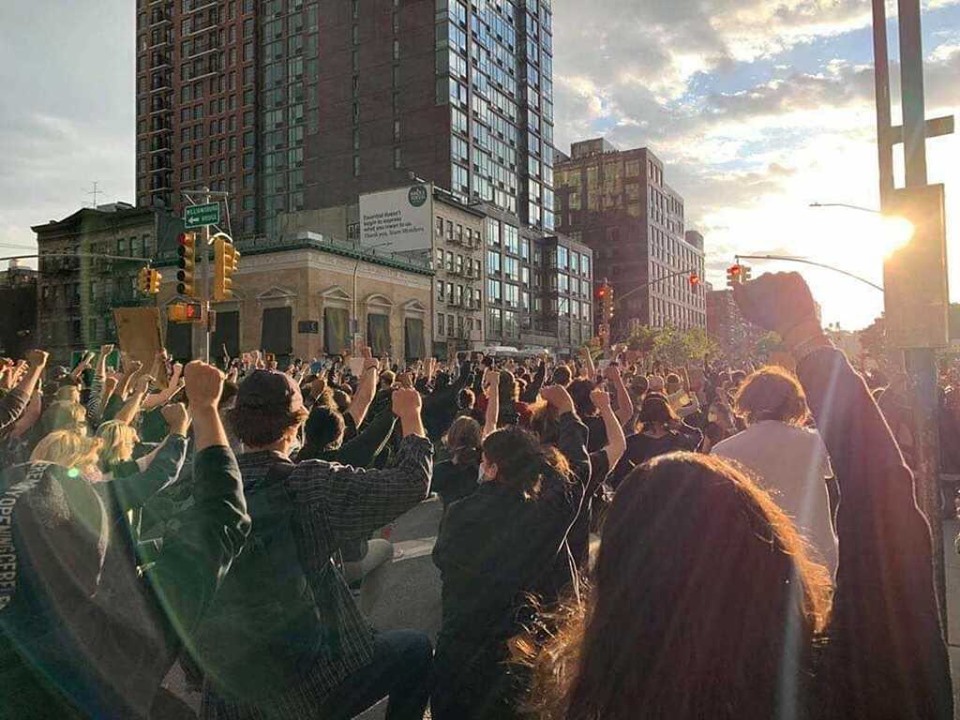 Only 22% of voters say the 2020 election will “definitely” be free and fair. Young people are especially skeptical / Image: own work
Only 22% of voters say the 2020 election will “definitely” be free and fair. Young people are especially skeptical / Image: own work
A lot has been made about voter turnout in these elections. Nearly 100 million votes were cast ahead of election day, roughly two-thirds of the total for the entire 2016 election. Some estimate that voter turnout will be as high as 65% or 70% of eligible voters. Compared to an average of around 55% in recent presidential elections, this would seem to indicate real engagement. But even these projections would mean that 30 to 35% of eligible voters—tens of millions of people—weren’t motivated enough to get out and vote despite four years of chaos and lesser-evil pressure.
The early turnout has, in part, been driven by conditions imposed by the pandemic and by fears that problems with the Postal Service will invalidate votes not cast well in advance. People also worry about violence and intimidation at polling stations on election day. And as we have seen, millions are motivated by hatred for the opposing party more than real enthusiasm for the candidate they are voting for. Only 22% of voters say the 2020 election will “definitely” be free and fair and nearly 3 in 4 voters of either party are concerned about violent protests no matter the result. Young people are especially skeptical.
The higher turnout, and especially the apparent rise in young voters, would appear to favor Biden and the Democrats. After disappearing from public view for the last few years, the party trotted the still-popular Barack Obama out in the final days to stump for Biden. Many conservatives, including newspapers and pundits who have never endorsed a Democrat have come out for Biden—not because they have “moved to the left” but because he is so far to the right. The prospect of four more years of an untamed and unpredictable egomaniac in the White House gives them nightmares. In times such as these, they would prefer someone who will earnestly defend their interests while paying rhetorical lip service to the most pressing social problems.
“Follow the money”
During the second presidential debate, Trump accused Biden of being Wall Street’s candidate—and he wasn’t wrong. A survey of CEOs conducted by the Yale School of Management in late September found that 77% planned to vote for Biden and that over 60% predicted he would win. Instability is bad for business, and Trump is the definition of instability.
Although corporate America profited mightily under Trump, Joe Biden is seen as a much safer pair of hands. His joint fundraising committees benefited from a wave of big-money contributions from corporate America during the third quarter, raising $383 million in September alone. According to the nonpartisan Center for Responsive Politics, the financial industry has largely favored Biden, spending more than $50 million to back his candidacy compared to $10 million for Trump. Like all good capitalists, they see these contributions as an investment, and they expect a return, whether directly or indirectly, in the short or long term.
Based on poll sampling and methodology, which is alleged to be more refined than in 2016, Biden leads Trump by a higher margin nationally and in key swing states than Hillary Clinton did. For what it’s worth, the stock market gives Biden a sliver of an advantage. Pollster Robert Cahaly of the unorthodox Trafalgar Group, who went against the grain and predicted Trump’s win in 2016, predicts another upset. So while it is statistically unlikely, a Trump victory cannot be ruled out.
The calm before the sh*tstorm
Many people sincerely feel that the stakes are higher than ever and that their loved ones and families are literally in the line of fire. They hope the tension and polarization will subside if only there’s a change of tone at the top. For lack of an alternative, they will cast an unenthusiastic vote for Biden. But they will be bitterly disappointed yet again, no matter who comes out ahead. The uncertainty, instability, and polarization will only worsen, and the fundamental relations of exploitation and oppression will remain—until the system as a whole is overthrown by the conscious action of the working class.
As we have seen, small margins in particular areas can have an outsized influence on the final result. White suburban women voted heavily for Trump in 2016 but began an exodus in the 2018 midterms. Black women, considered by many to be the Democratic Party’s backbone, are mobilized to vote in record numbers—never mind that the party tops are riding on their backs. But it all depends on where the votes are cast—and whether or not they are counted. It will likely come down to a handful of states, including Pennsylvania, Wisconsin, Arizona, and Florida. Since 1928, just two candidates who have won Florida have not gone on to win the presidency.
Unless it is a total blowout for Biden, it is unlikely we will know the full results on election night. It could take days or weeks for all the votes to be counted. Trump may well declare victory on election night, only to scream that he was “robbed” once all the mail-in ballots are counted. Or he may simply decline to concede, even in the face of a clear Biden victory. The Donald has made a career out of betting that he will come out on top of a wild scramble for position, that his opponents will be so surprised and disoriented that they will be knocked out of contention. If need be, he will drag the process through the mud of the courts as long as possible, unleashing an unholy constitutional and legal crisis—the consequences to the system as a whole be damned.
And if Biden loses, he too is unlikely to concede before exhausting every possible legal and procedural angle. And if it gets punted to the Supreme Court or House of Representatives, confidence in the process will be even further undermined. No matter what the result, further chaos, instability, and confusion are all-but guaranteed.
There are countless variables, and we should expect the unexpected. What would another Trump victory mean for the working class? What are the perspectives for the class struggle under Biden and a “national unity” government? What happens if the Democrats win the “trifecta” and sweep Congress and the presidency? What would all of this mean for organized labor? For DSA and the left generally? What about the down-ballot elections? We will explore these questions and more in the days ahead. Whether it takes hours, days, weeks, or months to resolve fully, these processes will be somewhat more crystallized after tomorrow.
This much is clear already: the working class has no candidate in these elections. George Floyd and Breonna Taylor have no candidate. The countless survivors of sexual assault have no candidate. The youth who will inherit the climate catastrophe have no candidate. One of these pro-capitalist candidates will win, and the working class as a whole will lose. Huge swathes of the left have caved to the pressure of lesser evilism and the alleged imminence of fascism. They have no inkling that, although American politics has indeed drifted even further to the right — the working class as a whole and especially the youth have not. There is a glaring disconnect between what is needed and desired by millions of workers and young people and what is being offered at the ballot. Eventually, something will have to give.
We’ve said it before, and we’ll say it a million times more if necessary: what the American working class needs is a mass party of its own, armed with a revolutionary socialist program that transcends the limits of capitalism. This idea must be clearly, patiently, and doggedly raised in the movement, the fulcrum around which our many seemingly separate struggles can be linked into one.
Whoever wins, 3 November 2020 will mark a new point of inflection in the crisis of capitalism, the class struggle, and the contradictory development of class consciousness. If Trump is victorious, incredulous outrage and despair will knot the stomachs of millions—while his minions and toadies gloat and rejoice. But even if an initial explosion of protests eventually runs out of steam—no movement can live indefinitely on anger alone—we can expect the inspiring movement of the last few months to return on an even higher level over the next four years. Unable to defeat a criminal clown during an economic meltdown and pandemic, the utter rottenness of the Democrats would be exposed once and for all and the need for a total and immediate break will be apparent to millions.
If Biden wins, it will be the School of the Democrats 2.0. Having inherited one hell of a mess from Trump, he will be given something of a honeymoon—though not forever. His mission will be to reestablish the stability and credibility of the system’s institutions while preparing the way for the next generation of Democratic defenders of capitalism. Remember: even Bernie’s milquetoast crumbs were seen as too radical by the party tops. Their vision for the party’s future runs straight through the likes of former “top cop” Kamala Harris. If the Democrats win control of Congress, they will have no legitimate excuses for not carrying out the sweeping reforms supported by the majority, and their real loyalties and systemic limitations will be exposed.
Bourgeois elections can provide a useful snapshot of the mood in society at a given moment. But they cannot offer a solution to the fundamental problems faced by the workers and youth. Though it won’t be an automatic or linear process, eventually, the despair, unfocused anger, and uncertainty will be cut across by the class struggle.
An epoch of revolution and counterrevolution
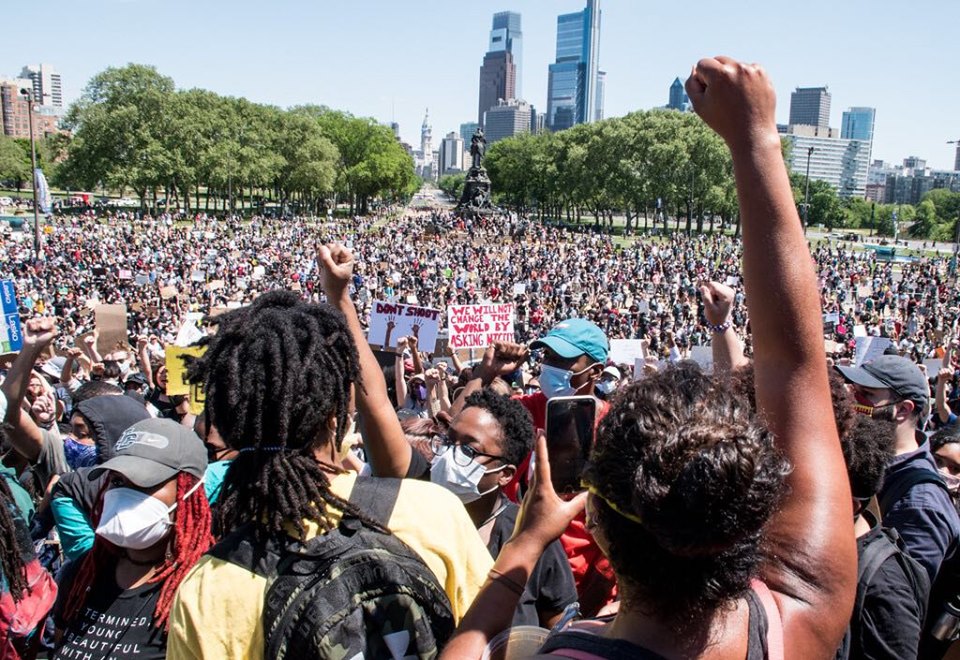 The social contradictions in US society and worldwide are all pushing in the direction of a new revolution in our lifetime / Image: Joe Piette, Flickr
The social contradictions in US society and worldwide are all pushing in the direction of a new revolution in our lifetime / Image: Joe Piette, Flickr
The period we have entered is more akin to the pre-revolutionary 1750s and 1850s than the 1950s. The relative stability of the postwar period is dead and buried, and the social contradictions are all pushing in the direction of a new revolution in our lifetime.
The great Frederick Douglass understood the importance of the vote and was a lifelong advocate of suffrage for both black people and women. One of the first things he did as a runaway slave in New Bedford, Massachusetts was to register to vote. But he also understood that voting alone is not enough to bring about fundamental change. He knew that institutions designed for the rule of one class over another cannot be reformed out of existence—they must be overthrown through struggle. In 1857, on the eve of the US Civil War, he wrote the following magnificent lines:
“Let me give you a word of the philosophy of reform. The whole history of the progress of human liberty shows that all concessions yet made to her august claims have been born of earnest struggle. The conflict has been exciting, agitating, all-absorbing, and for the time being, putting all other tumults to silence. It must do this, or it does nothing. If there is no struggle, there is no progress. Those who profess to favor freedom and yet deprecate agitation are men who want crops without plowing up the ground; they want rain without thunder and lightning. They want the ocean without the awful roar of its many waters.
“This struggle may be a moral one, or it may be a physical one, and it may be both moral and physical, but it must be a struggle. Power concedes nothing without a demand. It never did, and it never will. Find out just what any people will quietly submit to, and you have found out the exact measure of injustice and wrong which will be imposed upon them, and these will continue till they are resisted with either words or blows or with both. The limits of tyrants are prescribed by the endurance of those whom they oppress. In the light of these ideas, Negroes will be hunted at the North and held and flogged at the South so long as they submit to those devilish outrages and make no resistance, either moral or physical. Men may not get all they pay for in this world, but they must certainly pay for all they get. If we ever get free from the oppressions and wrongs heaped upon us, we must pay for their removal. We must do this by labor, by suffering, by sacrifice, and if needs be, by our lives and the lives of others.”
Stay tuned for more analysis of the US elections in the days and weeks ahead! Subscribe to our US comrades' podcast and YouTube channel to be notified of the latest updates!

